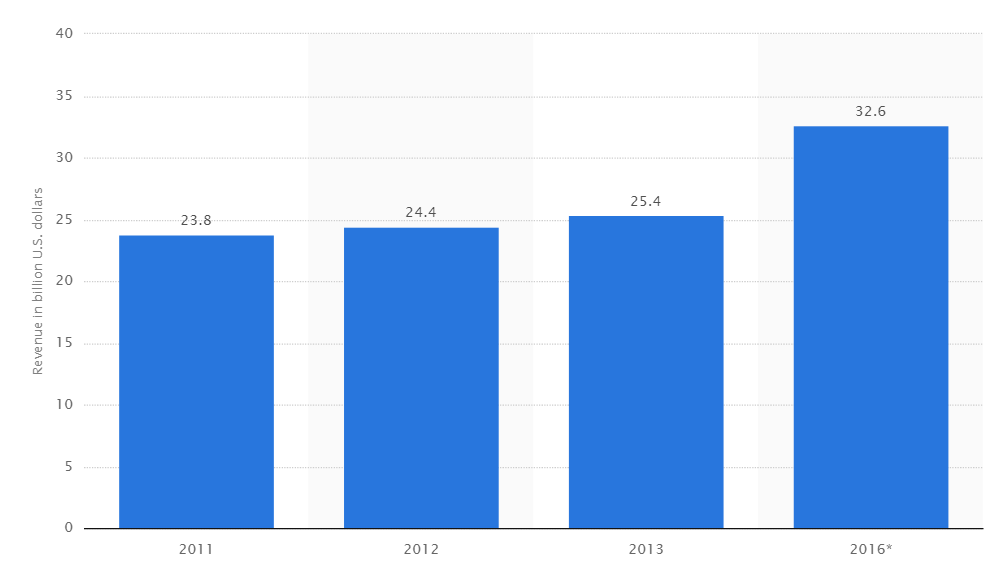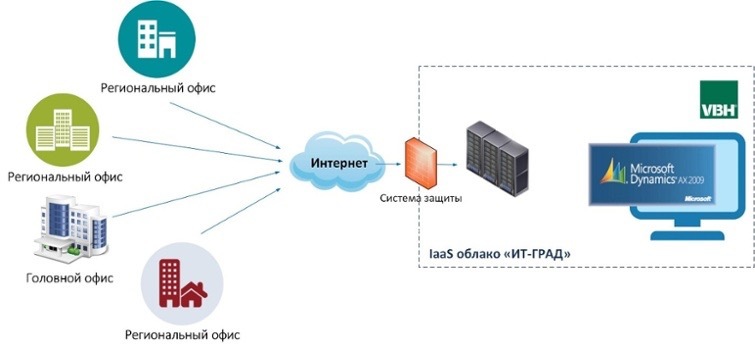"Planning Issues": Cloud ERP Hosting
According to Gartner Vice President Nigel Rayner, within a decade most companies will look at cloud technologies. "Instead of making on-premises, organizations will seek to transfer all functionality to the cloud," says Nigel. This trend also applies to enterprise resource planning (ERP) systems - in the period from 2011 to 2016, global spending on ERP software increased by 27%.

/ photo wagdi.co.uk CC
The implementation of the ERP system is a rather complicated and lengthy process, which implies serious changes in the logic of work, the structure of the company's business processes and the working order of the employees. Local enterprise resource planning systems have great potential for customization, but all of these settings have to be manually restored when the system is updated.
For this reason, many companies use irrelevant technology and avoid upgrades. According to the study , two out of three medium-sized businesses use outdated versions of ERP-applications.
')

/ Costs for ERP-systems in the period from 2011 to 2016
As for cloud resource management systems, they are regularly updated by the supplier, and at the same time all settings automatically “migrate”, which speeds up the solution sweep process — the deployment of cloud ERP solutions takes from 3 to 6 months, while launching a local ERP takes about a year.
Another reason for the growing popularity of cloud-based ERP solutions is economic gain. In the case of local systems, the company has to spend money to support the hardware component and the acquisition of licenses, and the staff has to cope with the maintenance on its own.
By giving away some tasks for outsourcing, an organization gets the opportunity to save about 30–40% of the budget - the cloud model eliminates spending money on equipment and additional technologies. It should also be noted that in the case of using local systems there are risks of equipment failure and possible problems with performance and data loss. The clouds are characterized by fault tolerance, reliability and availability of backup sites.
It is known that many companies are moving to the cloud, transferring there many business applications. ERP-services are not bypassed, as VBH, which is a distributor of goods and services for window and door industries, did.
“Initially, the MS Dynamics Axapta 3.0 ERP system was based on the local infrastructure. When we needed to update the ERP, we decided to include our infrastructure in a single cloud space, which was used by other representative offices of the holding, - said Sergey Ivanov, IT Director of VBH. “As a result, we managed to create a single cloud infrastructure and place various ERP solutions from other holding companies in it. Among them were services such as Microsoft Dynamics Navision, SAP, Axapta, 1C. ”
The company used the cloud service for several years, but the law on personal data, issued in 2015, forced VBH to think about switching to the domestic cloud. IT-GRAD was selected as the service provider.
“We moved to a domestic data center and continue to use the chosen solution,” says Sergey Ivanov. “By building a channel between the cloud and the local data center, we combined the infrastructure into a single computational local area network.”

Today, the core of VBH's IT infrastructure is concentrated in the cloud, which is located in the St. Petersburg data center, and the service itself is used by all employees of branches in cities from Murmansk to Krasnodar - workers connect to Axapta using remote access and work on their tasks.
Another example of a company that works with cloud-based enterprise resource planning systems is the “First BIT”, a division of which is developing a direction based on 1C product and uses the IT-GRAD IaaS cloud .
“Our mission is to make the service of remote access to 1C databases as simple as the mail in some Gmail,” said Victor Kanaev, head of the cloud computing department of the First BIT company. “We want to make access to 1C simple and convenient for any company.”
Today, the organization builds its projects from the so-called standard blocks. Each block is a Windows server with a 1C base and a client part, and the base can be further divided into different machines. In addition to the 1C infrastructure itself, Active Directory, Linux-based routing and networking machines, a terminal farm, and monitoring systems are used as supporting services. Thus, a scalable enterprise infrastructure is obtained.
Cloud technologies can improve the availability of solutions, reduce the cost of maintenance and infrastructure maintenance and “raise” the quality of services provided to customers. Cloud ERP services today are in demand by enterprises that require additional management flexibility. For example, cloud services such as SAP Hosting and 1C ERP Hosting have become commonplace in Russia.
PS Some interesting materials on the topic from our blog:

/ photo wagdi.co.uk CC
The implementation of the ERP system is a rather complicated and lengthy process, which implies serious changes in the logic of work, the structure of the company's business processes and the working order of the employees. Local enterprise resource planning systems have great potential for customization, but all of these settings have to be manually restored when the system is updated.
For this reason, many companies use irrelevant technology and avoid upgrades. According to the study , two out of three medium-sized businesses use outdated versions of ERP-applications.
')

/ Costs for ERP-systems in the period from 2011 to 2016
As for cloud resource management systems, they are regularly updated by the supplier, and at the same time all settings automatically “migrate”, which speeds up the solution sweep process — the deployment of cloud ERP solutions takes from 3 to 6 months, while launching a local ERP takes about a year.
Another reason for the growing popularity of cloud-based ERP solutions is economic gain. In the case of local systems, the company has to spend money to support the hardware component and the acquisition of licenses, and the staff has to cope with the maintenance on its own.
By giving away some tasks for outsourcing, an organization gets the opportunity to save about 30–40% of the budget - the cloud model eliminates spending money on equipment and additional technologies. It should also be noted that in the case of using local systems there are risks of equipment failure and possible problems with performance and data loss. The clouds are characterized by fault tolerance, reliability and availability of backup sites.
Cloud cases
It is known that many companies are moving to the cloud, transferring there many business applications. ERP-services are not bypassed, as VBH, which is a distributor of goods and services for window and door industries, did.
“Initially, the MS Dynamics Axapta 3.0 ERP system was based on the local infrastructure. When we needed to update the ERP, we decided to include our infrastructure in a single cloud space, which was used by other representative offices of the holding, - said Sergey Ivanov, IT Director of VBH. “As a result, we managed to create a single cloud infrastructure and place various ERP solutions from other holding companies in it. Among them were services such as Microsoft Dynamics Navision, SAP, Axapta, 1C. ”
The company used the cloud service for several years, but the law on personal data, issued in 2015, forced VBH to think about switching to the domestic cloud. IT-GRAD was selected as the service provider.
“We moved to a domestic data center and continue to use the chosen solution,” says Sergey Ivanov. “By building a channel between the cloud and the local data center, we combined the infrastructure into a single computational local area network.”

Today, the core of VBH's IT infrastructure is concentrated in the cloud, which is located in the St. Petersburg data center, and the service itself is used by all employees of branches in cities from Murmansk to Krasnodar - workers connect to Axapta using remote access and work on their tasks.
Another example of a company that works with cloud-based enterprise resource planning systems is the “First BIT”, a division of which is developing a direction based on 1C product and uses the IT-GRAD IaaS cloud .
“Our mission is to make the service of remote access to 1C databases as simple as the mail in some Gmail,” said Victor Kanaev, head of the cloud computing department of the First BIT company. “We want to make access to 1C simple and convenient for any company.”
Today, the organization builds its projects from the so-called standard blocks. Each block is a Windows server with a 1C base and a client part, and the base can be further divided into different machines. In addition to the 1C infrastructure itself, Active Directory, Linux-based routing and networking machines, a terminal farm, and monitoring systems are used as supporting services. Thus, a scalable enterprise infrastructure is obtained.
Cloud technologies can improve the availability of solutions, reduce the cost of maintenance and infrastructure maintenance and “raise” the quality of services provided to customers. Cloud ERP services today are in demand by enterprises that require additional management flexibility. For example, cloud services such as SAP Hosting and 1C ERP Hosting have become commonplace in Russia.
PS Some interesting materials on the topic from our blog:
Source: https://habr.com/ru/post/314596/
All Articles